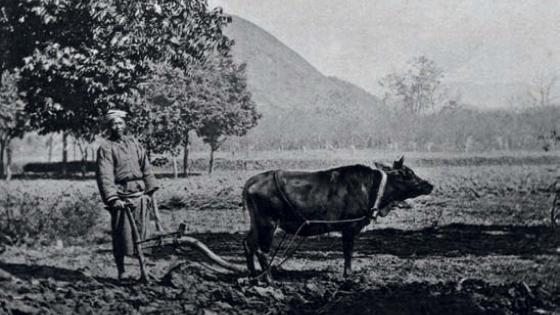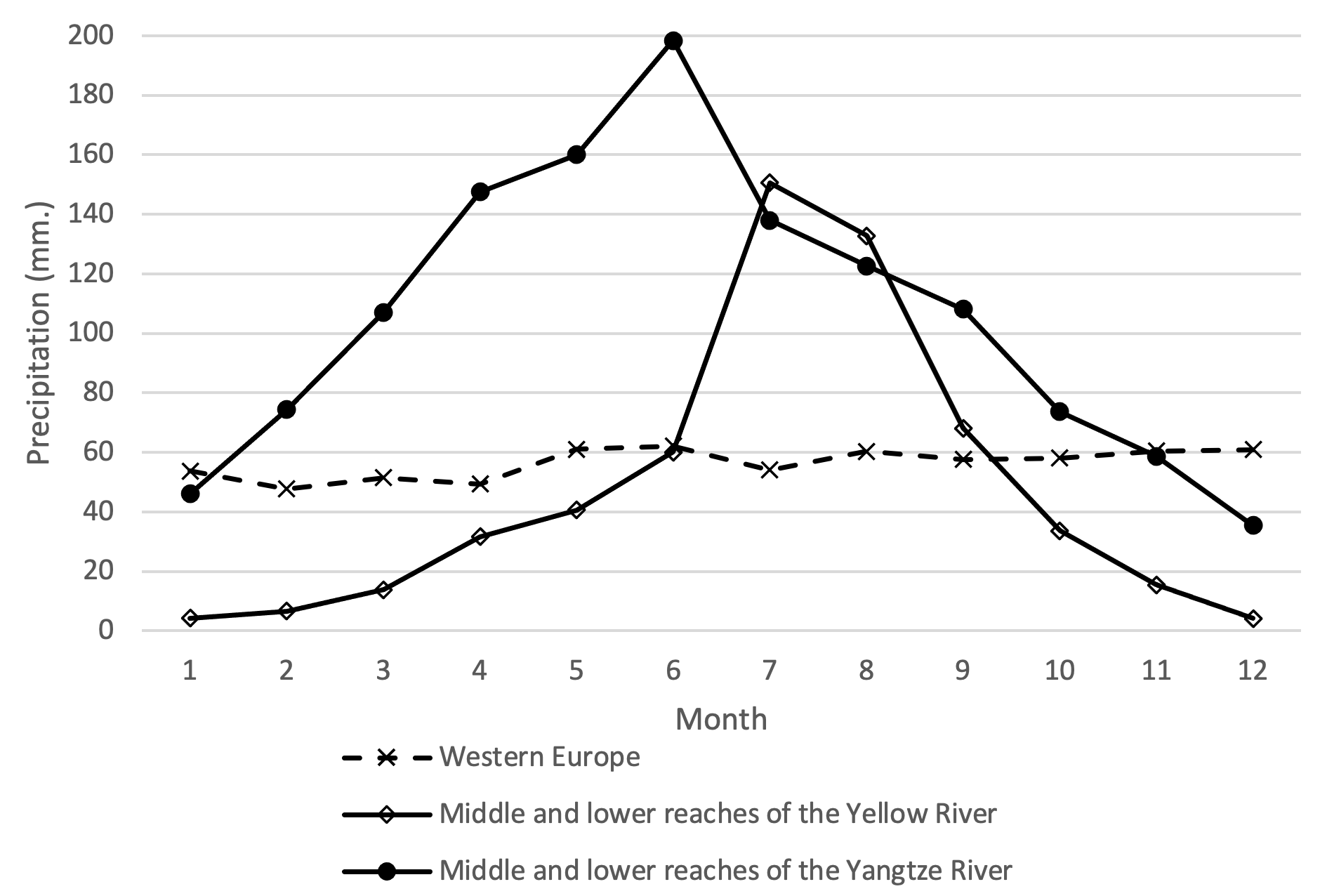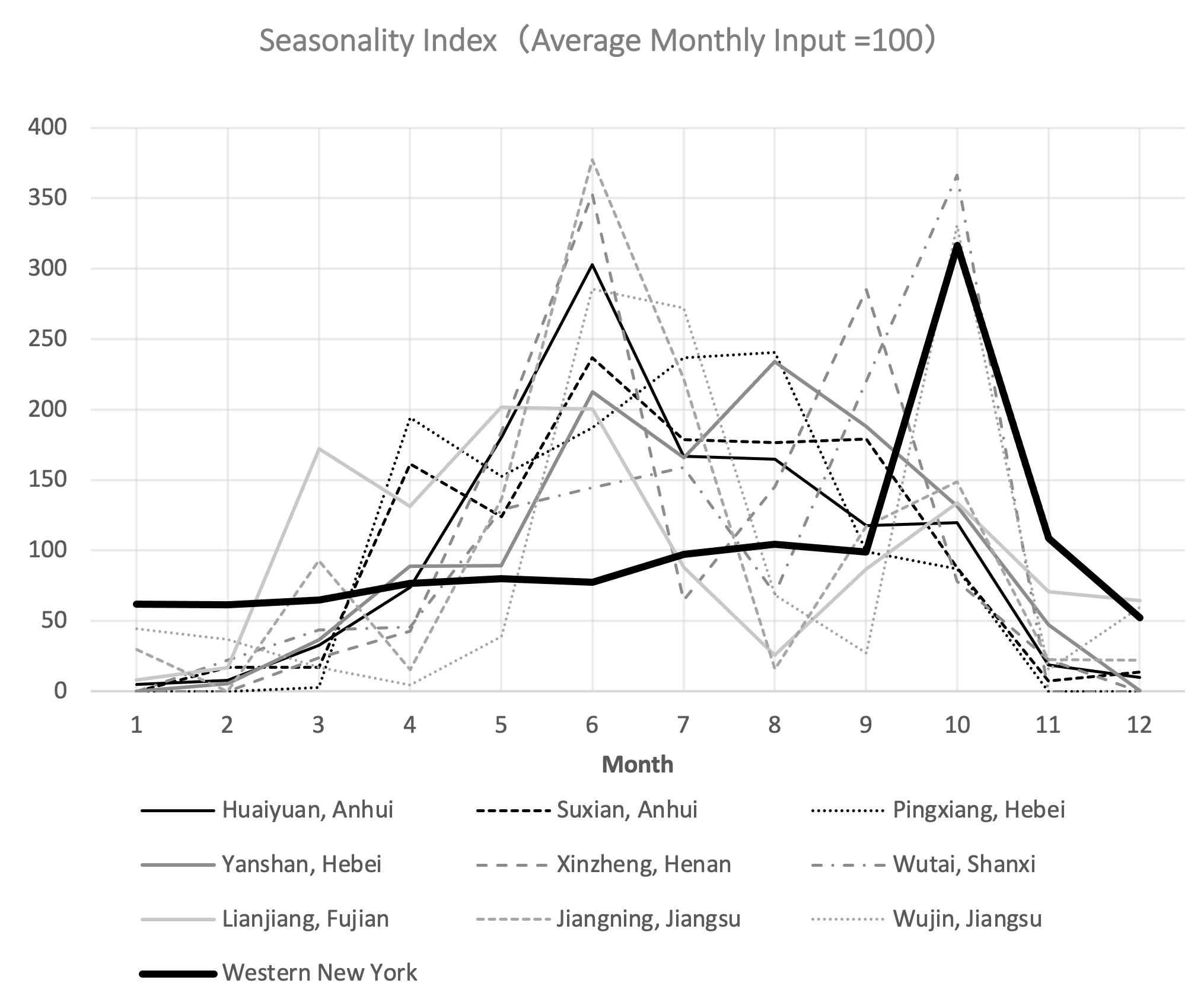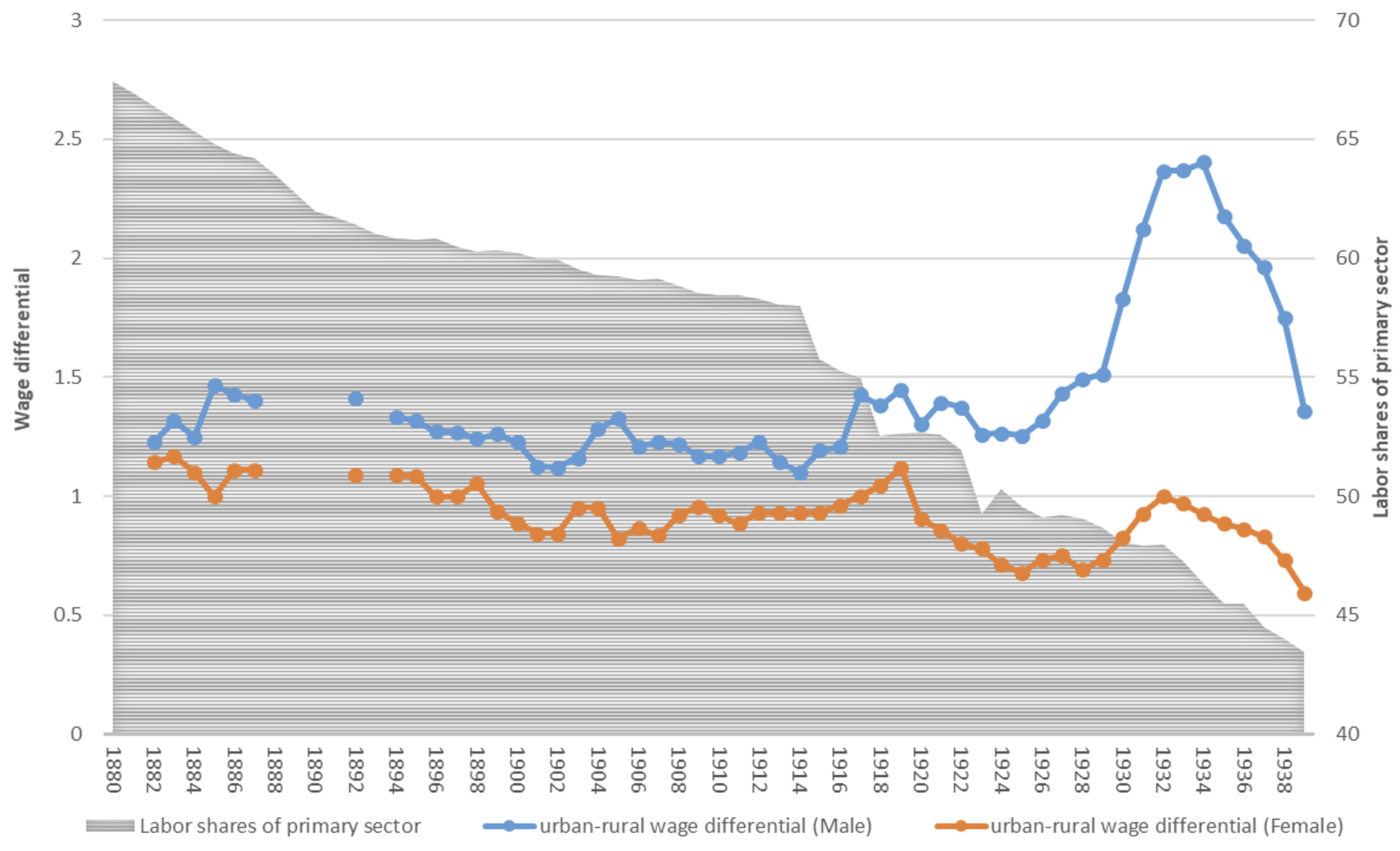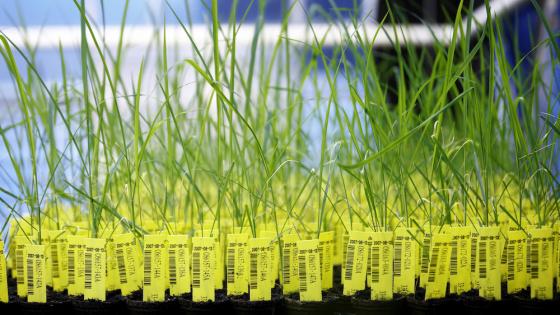The historical performance of Chinese agriculture has been one of the core determinants of long-term living standards in China and is at the heart of the so-called Great Divergence debate. The long-run deterioration in China’s land-labour ratio have given rise to a Malthusian interpretation of Chinese agriculture in the form of the so-called ‘involution’ thesis of Philip Huang. The original argument leads to a largely pessimistic vision of a long-run decline in agricultural productivity and output per capita in the face of resource constraints and over-population (Huang 2002). Nonetheless, a more optimistic version of the thesis, as recently championed by the California School, posits that Chinese agricultural expansion, particularly in the highly developed Lower Yangzi area, has proceeded on a technological and institutional trajectory that is distinct from the well-known British or Western European model. In agriculture, efficiency gains were made by the use of better fertilisers, rationalisation of resource use, agricultural intensification, and cash-crop cultivation. This technical bias induced by the Lower Yangzi’s relative factor endowment, combined with the expansion in regional trade and geographic division of labour, constituted what they viewed as Smithian growth, or ‘industrious revolution’ (Kenneth Pomeranz 2002, Li 1998).
In our recent paper (Ma and Peng 2021), we argue that a critical issue neglected in the debate is the function of subsidiary or sideline production as an intertemporal labour re-allocation mechanism to address the high agricultural seasonality of China’s monsoon climate. Using stylised empirical facts from 19th-20th century Chinese (and Japanese) agriculture and a theoretical model, we demonstrate that this labour reallocation across the harvest and idle seasons contributes to a Boserupian type of growth with rising commercialisation and population density, but not necessarily urbanisation, rising productivity and structural change (Boserup 1965). Ultimately, it was industrialisation and the expansion of markets, developments that occurred outside agriculture that pulled China (or Japan) out of the ‘involutionary’ path and took China onto a path of modern economic growth (see Saito and Settsu 2010 for the case of Japan).
Seasonality
In comparison at least with Western Europe and North America, two interrelated features of Chinese (and East Asian) agriculture standout: seasonality and a predominantly crop or grain-based economy. In China, the two main agricultural zones are the wheat cultivating areas in Northern China along the Yellow River and those of rice cultivation along the Yangzi river and below. Figure 1 shows that there are much greater seasonable variations in rainfall in both zones compared with Western Europe, which had a huge impact on Chinese agriculture as it generated intense demand for agricultural labour during the much-shortened peak season. This in turn placed severe constraints on the average size of a household farm and the nature of agricultural production (Ma and Peng 2021).
Figure 1 Rainfall data in Western Europe and China
A 1930s survey of agricultural labour use across Northern and Southern China clearly shows the pronounced peak seasons around the months of June and October across different regions, whereas labour inputs were extremely low in the early and final part of a 12-month cycle over the year. As shown in Figure 2, in comparison, seasonality in the US is far less pronounced owing partly to less seasonality in grain production but more importantly to the much higher share of animal husbandry. Even in the case of the US, the most pronounced pattern of seasonality is cotton cultivation in the American South (see Figure 3, Ma and Peng 2021).
Figure 2 Seasonality in comparison with US
Such pronounced differences in seasonality would reveal themselves in patterns of wages across the season. Figure 3 reveals the inverse relationship between daily agricultural wages and the percentage of idle time throughout a year. Figure 4 plots the wage series against the agricultural seasonality index of the two Hebei counties in Northern China that is in striking synchrony except that the wage series were much smoother than the seasonality index. Most noticeably, the months of January, February, November, and December are almost completely idle in terms of labour use. However, the wage rates during those months hovered far above zero. This, as we argue, is exactly the labour reallocation mechanism at work where peasants consciously relocate sideline or household production during these idle months, which allowed wages to be maintained above zero. Clearly, the wage rate presented in the figures is an equilibrium outcome achieved after smoothing the seasonal marginal product differentials across the months through the labour reallocation between agricultural mainline and sideline activities.
Figure 3 Percentage share of idle time (left axis) and wage rates (units of copper cash on right axis)
Figure 4 Wage rate index and agricultural seasonality index in Hebei Province (monthly average)
Seasonality and economic impact
In a comparative study, Sokoloff and Dollar (1997) argued that greater seasonality of labour supply in England relative to the US as measured by the ratio of harvest to idle wages gave rise to greater English reliance on the cottage industry than the American counterpart during early industrialisation. In Ma and Peng (2021), we show that the difference in seasonality between England and the US is much smaller compared to differences between them and China. In dealing with seasonality, farmers select technology more for intertemporal labour re-allocation than to increase the productivity in busy seasons. The development of cotton spinning or weaving in China’s early modern era reveals a daily value-added differential of about two to one for grain production relative to cotton cultivation, spinning, and weaving in a joint household production. The involution argument often interprets this productivity differential as a symptom of lower or diminishing returns to labour in cotton cultivation or textile handicraft relative to grain or staple production, resulting from over-population. However, cotton cultivation extends the number of workdays and raises the marginal returns during the agricultural slack season through sideline production (e.g. spinning and weaving). Moreover, sideline (handicraft) production could take advantage of not only idle seasons but also of the slack labour force such as women and children (Li 1998).
We employ this new analytical framework to reinterpret some fascinating existing studies. Li and van Zanden (2012), analysing the national accounts of a region of the Lower Yangzi in China – the Hua-Lou area – and the Netherlands during 1823-1829, show in a comparative study that the labour productivities in the primary (agricultural) sectors between the two regions are roughly comparable, yet Dutch labour productivity in the textile and cloth process was a striking 6.5 times of that of the Hua-Lou region. This contrast is reflective of the fact that the Dutch textile industry is largely composed of modern capital-intensive factories employing mostly full-time male labourers whereas the Hua-Lou textile production consists of mostly household production conducted by female labourers. This reveals the striking feature of East Asian industrialisation in its initial phase, which relied on (‘low-productivity’) household production in the early stage of industrialisation.
We can find confirmation in the Japanese industrialisation experience as seen in the evolution of rural by-employment in the early 20th century. It took place in two stages: an expansion in the early stage, followed by a contraction (Saito and Settsu 2010). Figure 5 shows that, despite industrialisation, the labour share in the agriculture sector did not show marked decline until about WWI, at which time the urban-rural or manufacturing-agriculture wage differential for male workers began to widen. Meanwhile, for female workers, who were more engaged in sideline production, the wage differential between urban and rural did not rise around the same period. They widened only slowly as industrialisation proceeded and became much more prominent in the period before WWI, and truly gathered pace in the inter-war period. It shows the resilience of rural by-employment due to the strength of cheap labour during the agricultural slack season.
Figure 5 Urban rural wage differential and primary labour shares in Japan
In conclusion, we emphasise that the seasonality factor has important implications for our understanding of China’s long-run development and industrialisation. Indeed, the revival of rural-based industrialisation such as township and village enterprise provided the engine of Chinese economic growth during the reform era of the 1980s and 1990s. More importantly, it was gross ignorance of this seasonality factor that partly accounted for the disastrous agricultural collectivisation experience in 1950s’ China.
References
Boserup, E (1965), The Conditions of Agricultural Growth, The Economics of Agrarian Change under Population Pressure, London: George Allen & Unwin Ltd.
Huang, P C C (2002), "Development or Involution in Eighteenth-Century Britain and China? A Review of Kenneth Pomeranz's The Great Divergence: China, Europe, and the Making of the Modern World Economy", Journal of Asian Studies 61(2):501-38.
Pomeranz, K (2002), “Beyond the East-West Binary: Resituating Development Paths in the Eighteenth-Century World”, The Journal of Asian Studies 61(2): 539-590.
Li, B (1998), Agricultural Development in Jiangnan, 1620-1850, Macmillan Press Ltd.
Li, B and J L van Zanden (2012), “Before the Great Divergence? Comparing the Yangzi Delta and the Netherlands at the Beginning of the Nineteenth Century”, The Journal of Economic History 72(4): 956-989.
Ma, D and K Peng (2021), “Involution” or Seasonality: a New Perspective on the 19-20th Century Chinese Agricultural Development”, CEPR Discussion Paper 16614.
Saito, O and T Settsu (2010), “Unveiling Historical Occupational Structures and its Implications for Sectoral Labour Productivity Analysis in Japan’s Economic Growth”, Global COE Hi-Stat Discussion Paper Series.
Sokoloff, K L and D Dollar (1997), “Agricultural Seasonality and the Organization of Manufacturing in Early Industrial Economies: The Contrast Between England and the United States”, The Journal of Economic History 57(2): 288-321.
